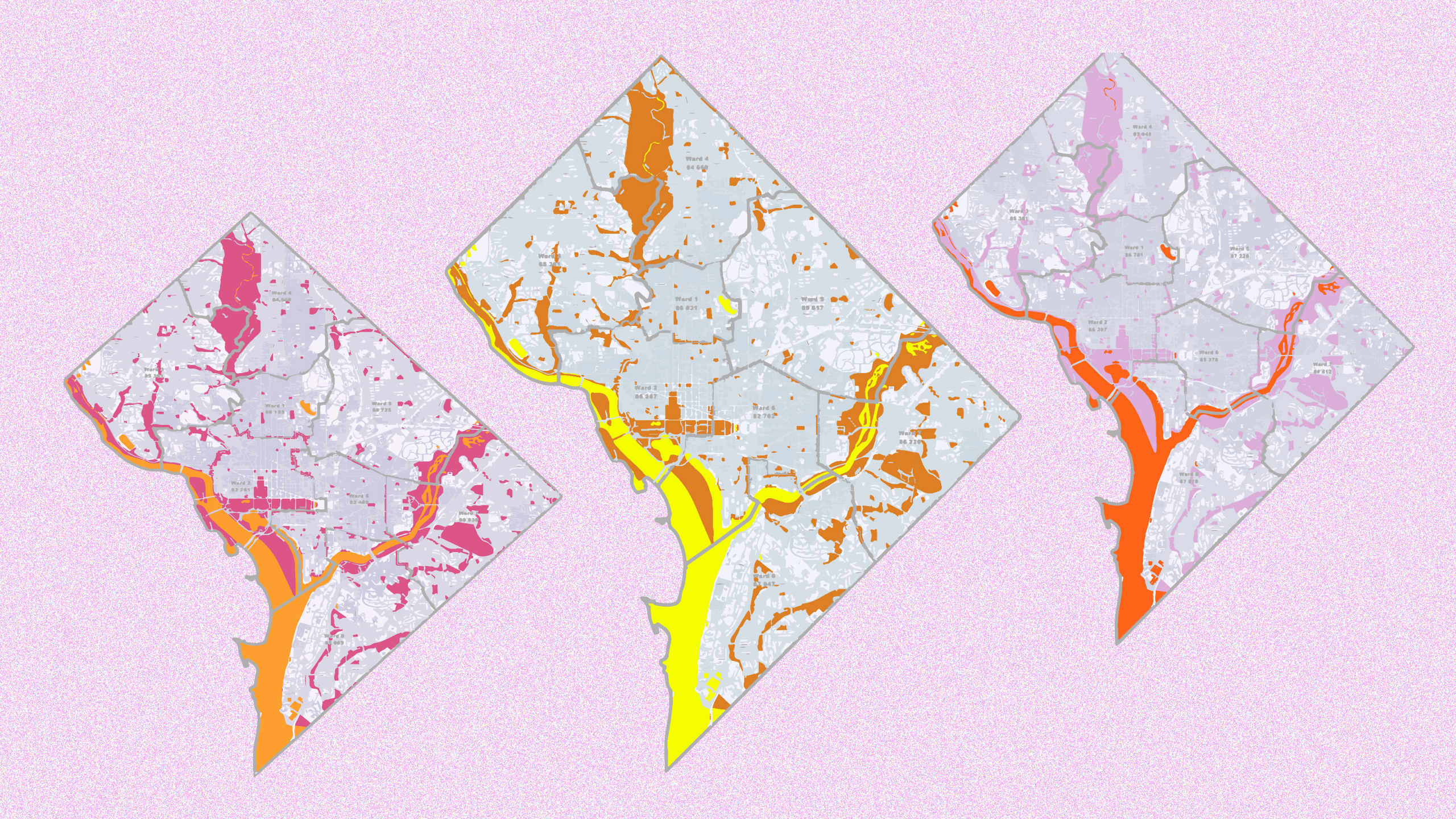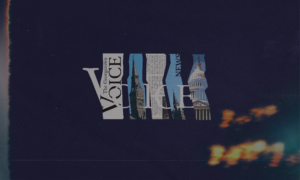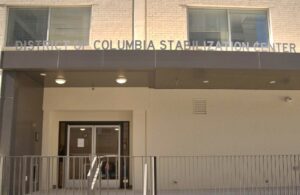Before Charles Wilson moved to Washington, D.C. 17 years ago, the Anacostia Historic District he now calls home was in Ward 6. After a constitutionally-mandated redistricting process 10 years ago, it was reclassified into Ward 8. Now, the lines around his neighborhood are being redrawn once again.
Materially, these lines don’t seem to matter much. “Your neighborhood boundaries don’t change, your neighbors don’t change, your way of life doesn’t really change. It’s just boundaries, that’s it,” Wilson said.
And yet, for some of the District’s residents, it feels like changing their ward changes everything. This tension represents the latest political scuffle in a city long defined by racial segregation and unequal access.
On Friday, Nov. 19, the Subcommittee on Redistricting, chaired by Councilmember Elissa Silverman (I-At Large), marked up and voted on a redistricting bill and map that changed the borders of D.C.’s eight wards. The subcommittee’s final proposed map extends parts of Ward 7 and 8 into Ward 6, across the Anacostia River. The bill will now go to the full D.C. Council for its first vote on Dec. 7, and the Council will cast its final vote to enact the new boundaries on Dec. 21.
While, as Wilson pointed out, redistricting will not change street addresses or drastically impact individuals’ basic day-to-day interactions with their government, the racial demographics of their wards will shift for some residents, especially those in Wards 6, 7, and 8.
After the release of the U.S. Census each decade, the Council evaluates the District’s ward populations and redraws boundaries to maintain relative balance in each. This census, D.C. saw a population growth of 14.6 percent to a total population of 689,545 residents from 2010 to 2020. This increase, however, was not evenly distributed among the eight wards, creating a constitutional need for redistricting to balance the number of residents each council member represents.
Over the last decade, the Ward 6 population grew by over 40 percent. Populations in Ward 7 and 8 only grew by 6.3 percent and 6.6 percent, respectively. As a result, these three wards fell outside the required ward population range. While Ward 6 has an extra 17,699 residents due to growing neighborhoods in Navy Yard and Southwest, Ward 7 falls short by 5,638 residents, and Ward 8 by 3,370.
When the census data was released, the Subcommittee on Redistricting launched a mapping tool for residents to learn more about the population changes as well as submit their own redistricting recommendations. Over 200 proposed maps were submitted.
On Nov. 1, three “discussion” maps were released as examples for redistricting and for residents to offer feedback. The maps were based on six principal criteria: equal representation; racially equitable; compact and contiguous; communities of interest are kept together; whole census tracts; and ward continuity and stability.
According to the memo released in October along with the three discussion maps, “the subcommittee’s final proposal will likely include elements from each of the three maps. Each map should not be considered as a whole, but as a combination of options.” In all three discussion maps, most of the wards experience boundary adjustments, save for Ward 3, which experiences none, and Ward 4, which only sees boundary shifts on one map.
What followed the release of these discussion maps was a series of ward-specific and citywide public hearings over the last few weeks where D.C. residents voiced their opinions on the proposed redistricting, many of which were negative.
“I would say the biggest consensus, the one thing almost everyone agrees on, is that we should not adopt any map that changes their ward,” Sam Rosen-Amy, Councilmember Silverman’s chief of staff, said of the hearings. “A lot of people have weighed in and said, ‘We don’t like this map because it changes my ward, it puts me in a different ward so you should choose this other map that doesn’t do that.’”
This resistance is not equal across all residents, however, according to Jamila White, an advisory neighborhood commissioner for Ward 8. In her view, residents in her community are more open to redistricting than some of their incoming neighbors across the Anacostia River. “I think the Ward 8 community is very welcoming of it, and that’s because our community has been Ward 6 before,” White said.
While some Ward 6 residents resist integration, for White, the growth of Ward 8 is an opportunity to bring people together, even if nothing gets physically closer. “These changes aren’t necessarily new, but it’s also reuniting communities that were historically united,” she added.
Wilson, who lives in the Anacostia Historic District, considers redistricting a symbolic reunification of historically connected areas on both sides of the Anacostia as well as the potential for increased civic engagement and attention paid to heavily-Black neighborhoods.
“Now we’ll be able to call the west side, the opposite side of Anacostia River, which has been known to kind of divide communities, to be considered a part of Ward 8,” Wilson said. “That’s exciting because not only will the ward have ‘more’ grocery store options or economic development options, but it will increase voter turnout because you’re adding additional voters to the Ward 8 rolls. When it comes time for election season, candidates running for office will have to pay more attention to this side of the city because they know there’ll be a higher voter turnout.”
Certainly, redrawing the ward lines will help numerically balance out unequal distribution of groceries, book stores, and other services that Ward 8 residents currently see a dearth of; however, the physical distance between families and food across the river will not change until new facilities are built east of the river. The larger problem of unequal access may not be immediately solved by redistricting, but some residents are hopeful it will spark a change.
“We want development. We don’t want to be stuck in a certain time period. However, we want development that does not lead to displacement but leads to an opportunity that leads to progress for our community,” White said. “We want to be a part of that development. We want to shape that development. We want it to be equitable and community-centered.”
These exact changes have been rapidly occurring in Ward 6, yet development is often accompanied by gentrification and displacement of low-income residents, which often has racially disproportionate outcomes displacing residents of color.
The threat of displacement has led to hesitation from some of White’s neighbors to wholly embrace redistricting.
“I feel like my feelings are still mixed,” Bàbá Alejaibra Badu, a long-term resident and community healer in the Anacostia Historic District said of D.C.’s redrawn boundaries. “I am a person that embraces change, though change can sometimes show up in the displacement of other people, or more so the displacement of people that are native to the space.”
White and other residents are hoping that the redistricting process furthers these conversations about gentrification in D.C. and why booming development in Ward 6 has not translated into nearly stagnated growth in Wards 7 and 8.
“I think this is an opportunity for the city, and for all residents quite frankly, to push for more equitable development for Ward 8, and ask themselves why is that Ward 6 has developed so fast, and not just so fast but through so many resources, and that Wards 7 and 8 haven’t?” White said.
It’s the hope of community members like Wilson and Badu that these questions will play into an even larger conversation about the constructed narrative of the neighborhoods east of the Anacostia River, especially as those borderlines extend and challenge that distinction.
“Ward 8 has been known to be that place over there that nobody really wanted to go to or needed to go to, and a place people wanted to avoid,” Wilson said.
“It’s in the messaging, it’s in the media, every article tells us we’re garbage. Every article: marginalized, vulnerable, poor Black population—talk about the why. Poverty is a policy issue, it is not a moral failure, so talk about why is it that this community has been starved,” White said. “We’re not marginalized; we’re not vulnerable. We’re excluded.”
This narrative surrounding wards became clear at the redistricting hearings, streamed live on Facebook, when residents expressed their frustration at the prospect of being associated with a new ward. While some cited issues such as parking, other comments about specific wards broke into less logistical territory.
Over the past few weeks, some Ward 6 residents have expressed discontent for their inevitable “move” to Wards 7 and 8. Given that Ward 6 is plurality white (49.52 percent) while Wards 7 and 8 are majority Black (91.74 percent and 91.84 percent respectively), these concerns bear resemblance to longstanding racist connotations of the neighborhoods east of the Anacostia.
These connotations seem to be central to a great deal of the concerns around redistricting. In one hearing, Rosen-Amy explained, a Ward 2 resident called Ward 1 a “horrible place,” as a reason for not wanting a border change. “We’ve had similar things said about Wards 7 and 8 about why people didn’t want to join those wards, and we pushed back on those too. That is not acceptable,” Rosen-Amy added.
Before the hearings began, Ward 6 Councilmember Charles Allen warned residents against engaging in dog-whistle racism about ward change.“If we hear someone say, ‘I’m concerned about my property values being reduced if I moved into a different ward,’ shut that down,” Allen said, referencing a thinly-veiled racist idea that the inclusion of people of color in a neighborhood drives down home prices. “It does not have a place in this debate. It’s not based on any kind of fact.”
This is not the first time D.C. residents have protested the redrawing of ward boundaries. According to Corey Holman, an advisory neighborhood commissioner in Ward 6, in 2010, a Ward 6 councilmember led marches against a proposal to move more of Ward 6 into Ward 7.
Oftentimes, these objections fell along racial divides in the District. In 1981, the Georgetown neighborhood fought against being moved from Ward 3 to Ward 2 (the ward the university is currently in), partially due to the fact that the majority-white neighborhood would be merged with the areas of Dupont and Shaw, then more racially diverse.
With the shifting boundaries, members of Ward 6 have the potential to be represented by a council member they did not vote for—at least until 2022 when six new members will be elected to the D.C. Council. And, as Holman noted, most people who voted for Councilmember Allen in Ward 6, a white man, looked like him. With their upcoming reclassification in majority-Black wards, that could change come December.
“Your representative may not look like you anymore, and your representative may hold different views than you do, but that doesn’t make it wrong or bad,” Holman said.
The redrawing of wards will also necessitate the redrawing of the Advisory Neighborhood Commission (ANC) Single Member District (SMD) boundaries, which connect D.C. residents with their government through their commissioners, who are elected one per district. With the growth of the District, many new SMDs will need to be added, according to Christian Damiana, a student advisory neighborhood commissioner for American University. “I think the ANCs are a really important way for local voices to be heard and they really serve as a liaison between the general public and the D.C. government,” he said.
Despite hesitancy, Holman notes that at the end of the day, not much will really change the lives of everyday residents in Ward 6. In fact, according to him, not even the parking boundaries will alter much. “How does it matter? Not a whole lot,” Holman said. “In the end, your city services will not change, your interactions with agencies will not change. It is simply who represents you, and some people are struggling with that.”
Whether it’s the ANC SMD boundaries or those of the wards, commissioners are aware that the racial equity principle of redistricting is critical in D.C. “I think there’s a lot of wealthy white homeowners who believe the lines should be drawn in a certain way, and while they’re constituents and their views should be considered, that should not necessarily be a priority when balanced against other things,” Damiana said.
The redrawing of lines, however, won’t solve the racial and social tensions extant in D.C. “We can build another building, we can build another bridge, and have celebrations, but not be honest with the people about what happens when you cross that bridge,” Badu said.
As the redistricting bill makes its way through the legislative process over the next month, some residents are choosing to see this as a chance for important conversations about identity in the District and the potential for more diverse and equitable communities in the face of pushback and discontent.
“It’s an opportunity that only comes every 10 years, right?” Wilson said. “We need to take full advantage of it.”





